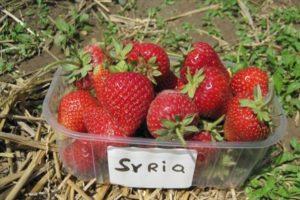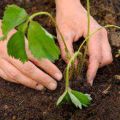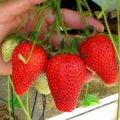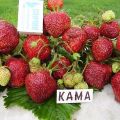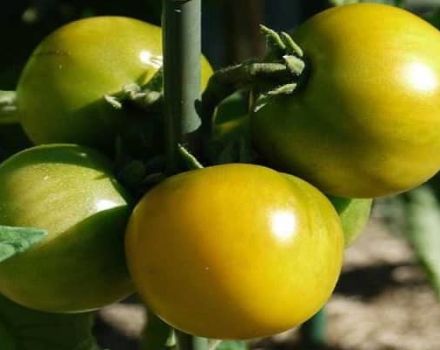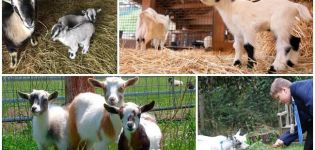Description and remontant strawberries of the Ostara variety, planting and care
The market offers a rich assortment of remontant grades with various characteristics. Moreover, both new, fashionable novelties and old, proven "fighters". But strawberries are attracted to gardeners, first of all, by their rich taste. And the strawberries of the Dutch breeders of Ostar have just in full the wonderful taste, thick aroma and high sugar content.
Description and characteristics of Ostara strawberries
This is a Dutch strawberry with neutral daylight (remontant). Moreover, it is rather elderly, its description is not a secret, and its history is almost 50 years old. Obtained as a result of cross-pollination of Red Gauntlet and Masharakhs Daurernthe varieties.
Fruiting timing and yield
The variety is characterized by high yield rates. The bush produces many peduncles. Each of them ripens up to a dozen berries. The productivity of the plant for a full season is 1.0-1.2 kilograms.
Ripens in the first decade of May in the southern regions, in the middle zone - from late May to early June. The variety bears fruit before frost, depending on the growing region. In the southern regions, the last strawberries are picked at the end of October.
Characteristics of bushes and fruits
Strawberry bushes are vigorous, medium-high, up to 25 centimeters. But the plants themselves are compact, densely leafy. Leaves of medium size and rich dark green color, covered with fine hairs. Peduncles are long, thin, and lie down on the ground under the weight of ripening fruits. There are many mustaches.
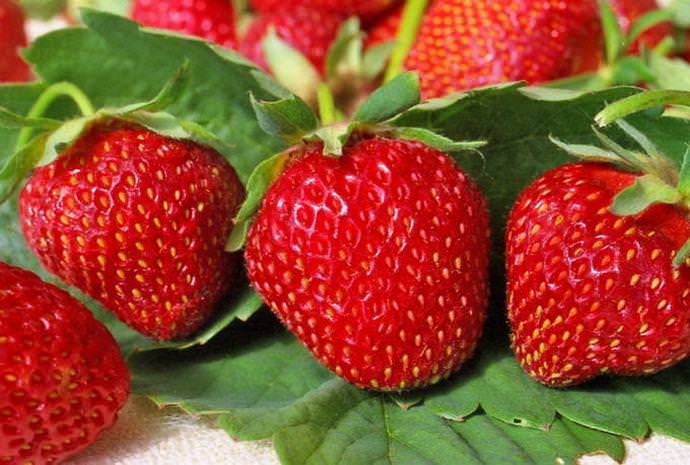
Berries are medium and small, shiny, bright red, wide conical in shape. The maximum size is in the range of 20-25 grams. But the fruits, as samples are taken, become much smaller. The berries have a high taste. They are very sweet, tasty, reminiscent of wild strawberries. With a thick, rich strawberry aroma.
Transportability and shelf life
The transportability and keeping quality of Ostar strawberries is low. You can even say that they simply do not exist. The berries are soft and flow immediately after picking.
Negative and positive aspects
Ostara, like other strawberry varieties, has its own pros and cons.The variety is quite "adult", therefore, in many respects it loses to today's promising novelties, which take into account all the disadvantages of old varieties.
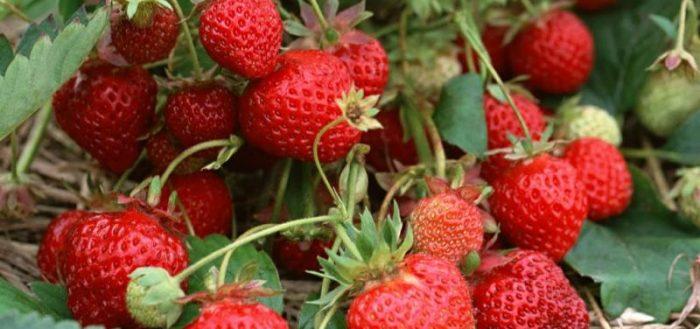
Positive sides:
- The unpretentiousness of the variety to soil and growing conditions.
- The right choice, as a plant for beginners, inexperienced summer residents.
- Drought resistance of the variety.
- High resistance of the variety to diseases and pests of garden strawberry.
- High and consistent yields.
- Excellent taste - berries are sweet, aromatic, reminiscent of wild strawberries.
- Strawberries are suitable for processing, preferably directly at the point of collection.
Negative sides:
- "Zero" transportability and keeping quality of fruits. Ostara strawberry variety - for the consumption of berries "straight from the bush".
- It is possible to store strawberries for a short time in the refrigerator or transport them over short distances in a shallow container. But the quality of the fruit itself will be low.
- Fresh berries are completely unsuitable for sale in markets. The fruits do not have any presentation. The berries are quite small, although tasty, and wrinkle a lot.
- Strawberries are quickly depleting, annual renewal is recommended.
- Many gardeners and summer residents have long abandoned Ostara in favor of new varieties. They are distinguished by their large, tasty fruits and do not lose their berry size during the season.
- The fruits are not suitable for freezing, drying, but only suitable for making jam. But on the other hand, it turns out to be very tasty and aromatic.
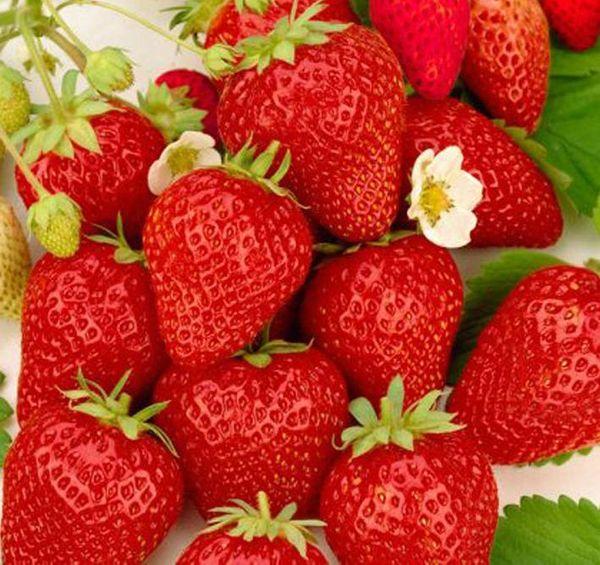
How to grow a variety correctly
For a generous and tasty strawberry crop, the grower needs to know how to properly grow the variety. Simply put, "pick up the keys to the plant."
Optimal planting times
Repaired varieties differ in that they are capable of producing berries in the year of planting. Moreover, when planting seedlings with a closed root system in spring, from the beginning of autumn, you can already get a tangible harvest.
Open-rooted strawberry seedlings are required to be planted from early April-May, depending on the region
It is advisable to do this as quickly as possible so that by summer the plant will gain strength and take root well. In autumn, ACS should be planted from the beginning of September. Seedlings with a closed root system can be planted at any time of the season. When planting in particularly hot summer months, it is necessary to provide almost daily watering for at least a week.
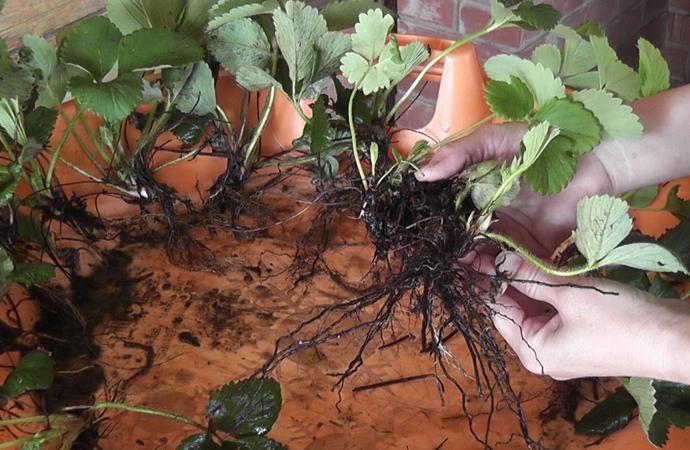
Soil selection
It is desirable that the soil for strawberries be light, loose, and breathable. Sandy loam soils with a neutral acidity index are best suited. Avoid wetlands or areas where groundwater is close to soil level. In such a bed, the root system of plants will simply rot.
Preparing the landing site
The site is carefully weeded, all residues of weeds are removed with a rake. Organic and mineral fertilizers are applied in 2-3 weeks. Then the site is dug up or plowed up and watered abundantly with water.
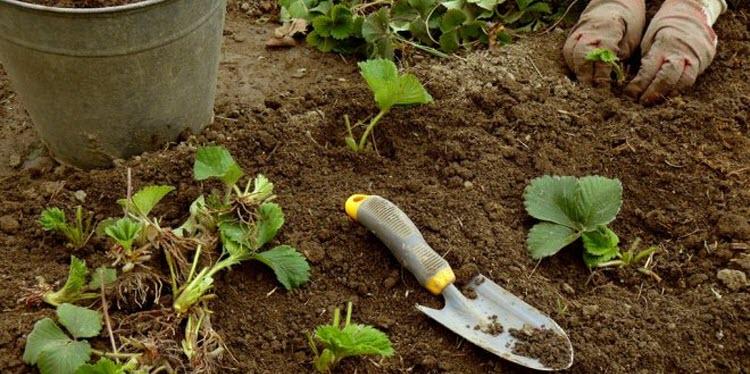
Landing in the ground
Planting of plants in summer is carried out in the morning or in the evening, when there is minimal solar activity. If planting is carried out in early spring or autumn, then strawberries can be planted throughout the day.
Some gardeners carry out planting, if necessary, even at night, using lighting fixtures.
In the case of summer or late spring planting, it will not be superfluous to shade the plants with agrofibre or a shade net. This will significantly improve the survival rate of strawberry seedlings. The duration of the shading variety is 1-2 weeks.
Care features
Like any remontant, constantly fruiting strawberry, the Ostara variety needs more careful care.
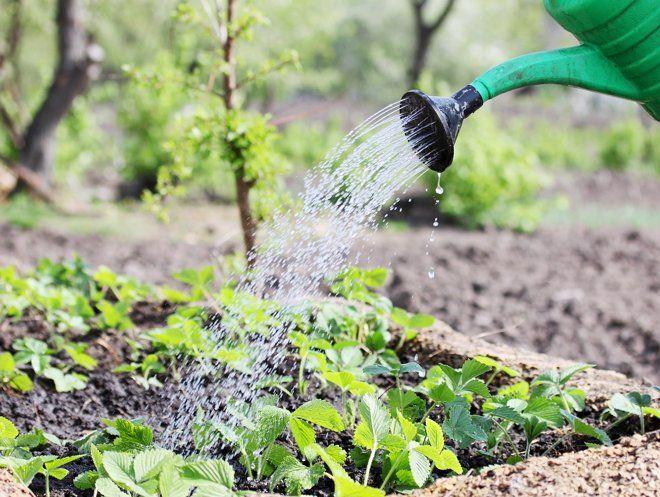
Watering
Watering is carried out in the early morning hours or in the evening.An effective method is to install a drip irrigation system for strawberries with a drip distance of 10-15 centimeters. Sprinkler irrigation with Golden Spray hoses is no problem. Or just a garden watering can, if there are few plants.
Top dressing
Ostara garden strawberry is a remontant variety that constantly produces a large number of fruits. Therefore, he needs regular and balanced feeding. Moreover, it is correct and effective to alternate spraying with fertilizers on the leaf with top dressing at the root. The results will not be long in coming.
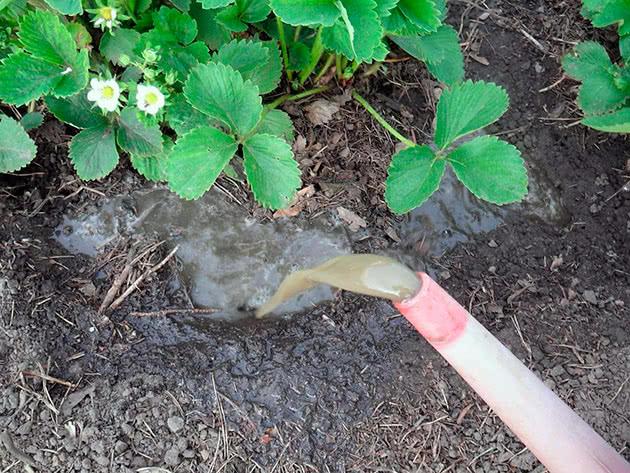
Weeding and mulching
Regularly mulching the soil will help retain moisture, protect the root system from overheating, and improve soil structure. Straw, cut weeds without roots and seeds, black film, agrotechnical and agrofibre will do. Moreover, agrofiber is suitable as black, two-layer, black and white, and ordinary - dense white.
With mulched plantings, loosening and weeding of the soil is carried out mainly in the aisles. Without mulch, it is advisable to weed regularly, about once every 2 weeks.
Preparation for wintering
In the northern regions from August, and in the more southern regions, from September, it is necessary to start preparing plantings for winter. It consists in sanitary cleaning, weeding, pre-winter moisture, processing with chemicals, fertilizing and sheltering strawberries.
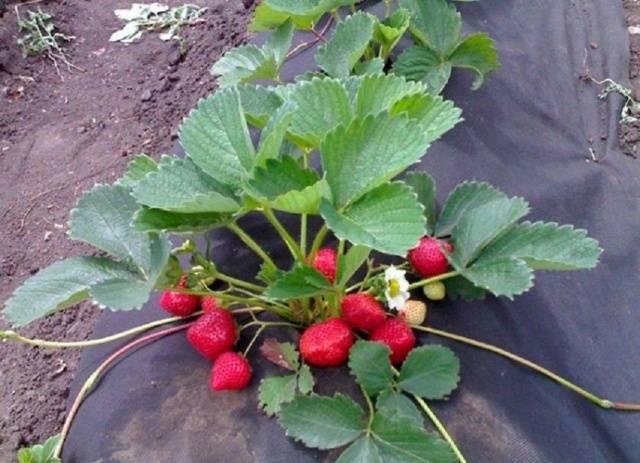
Disease and pest control
To prevent outbreaks of fungal diseases, it is necessary to avoid thickening of the plantings. And also regularly carry out sanitary cleaning. It is important to maintain the health of the bush. And in time to carry out agrotechnical techniques. Strong and healthy plants are much more successful at resisting infections and pests.
Gray rot (Botrytis)
Due in part to the soft, quickly perishable berries, Ostara strawberries are susceptible to gray rot. This common disease is caused by the harmful fungus, Botrytis cinerea. All aerial parts of the strawberry bush are affected: flower buds, berries, peduncles and leaves.
To prevent berries from rotting, especially in cool and rainy weather, it is advisable to mulch the soil. And also regular sanitary cleaning is required, with the removal of fruit residues, diseased and dried parts of the plant. For the fight, fungicides of systemic and contact action are used: Horus, Topsin, Copper Vitriol, Infinito.
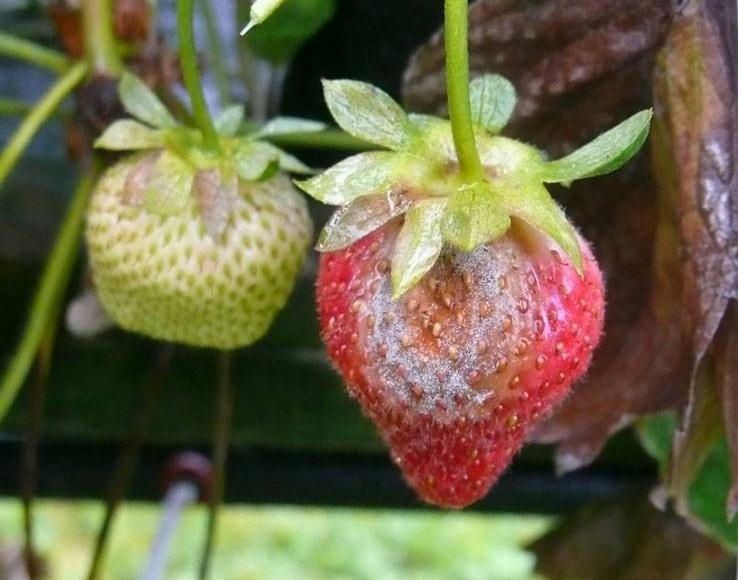
Powdery mildew
This fungal disease of strawberries appears as a thick white coating on all parts of the plant. And it will easily lead to complete destruction. To combat it, spraying with fungicides is used: Quadris, Topsin, Tiovit Jet.
Root rot (Rhizoctonia disease)
As a result of the defeat, the roots are first covered with spots, and then blacken and die off. Diseased plants are destroyed. For prevention and treatment, soil spillage with fungicides is used (Maxim, Fundazol, Quadris) and green manure embedding in the ground. In particular, take white or yellow mustard. Planting healthy and strong seedlings is important to combat black root rot.
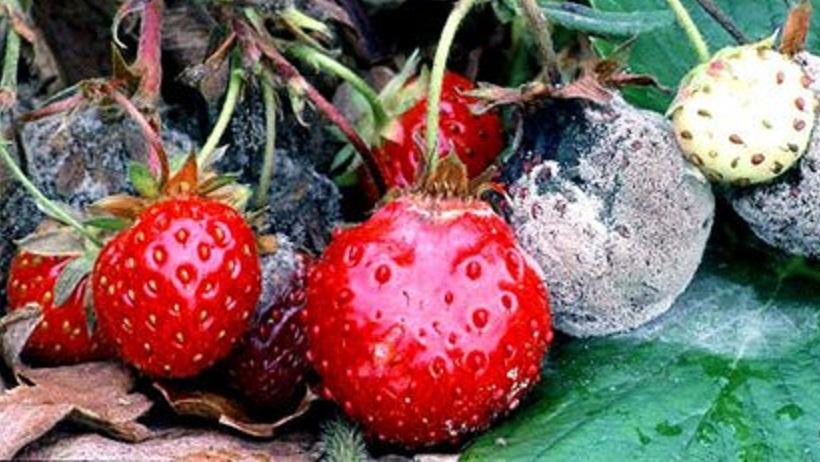
Strawberry and spider mites
Mites develop en masse in dry, hot weather. The affected leaves are removed and destroyed. And the plants are sprayed several times, with an interval of 7-10 days, with Actellik, Aktofit, Neoron, Masai.
Strawberry nematode
The most dangerous pest of strawberries, in 90% of cases, is a sentence to plants and the entire plot. It is difficult, sometimes impossible, to fight the nematode. But it is not so common. Infected plants are destroyed, and the site is not used for a couple of years, it is regularly spilled with chemicals and smelled with green manure. A line of drugs to combat nematodes has appeared on the market, for example, the drug Nematofagin.
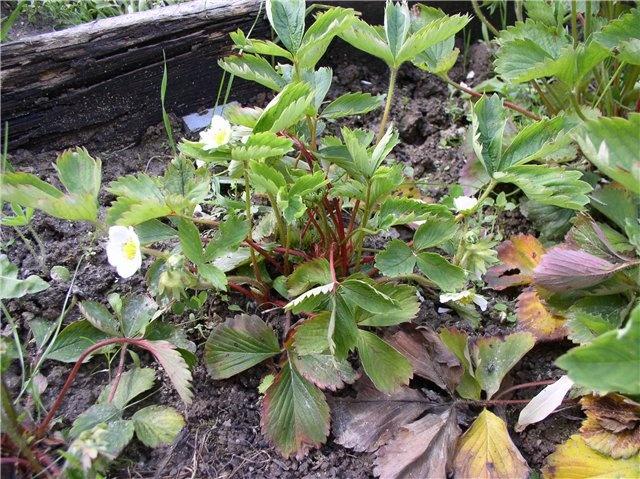
Snails and slugs
Snails and slugs thrive in dense plantings and high humidity.Control measures - placing on a number of traps, for example, bowls of beer. And, of course, manual collection or use of the drug Metaldehyde.
Reproduction of the Ostara variety
The Ostara variety produces many mustaches per season, so there will be no problems with reproduction. An effective way would be to root the vegetative whiskers in cups. Sockets of any size will do. But it will be more expedient, in order to obtain strong seedlings in the shortest possible time, to take only sockets of the first and second orders. This strawberry, planted in a large flowerpot, will decorate a balcony or loggia. And after the growth of the mustache, reproduction is carried out without leaving the city apartment.
Collection and storage of strawberries
Picking strawberries in autumn and spring is best done during the day, when the berries are warmed up in the sun. First, the berries will be dry, without morning dew. And secondly, the taste of the fruit will improve. In summer, on the contrary, morning gathering is preferable. Collect in small dishes, plastic booties, cardboard boxes. The shelf life in the refrigerator is a maximum of 1 day, then the strawberries drain heavily and are affected by rot.

